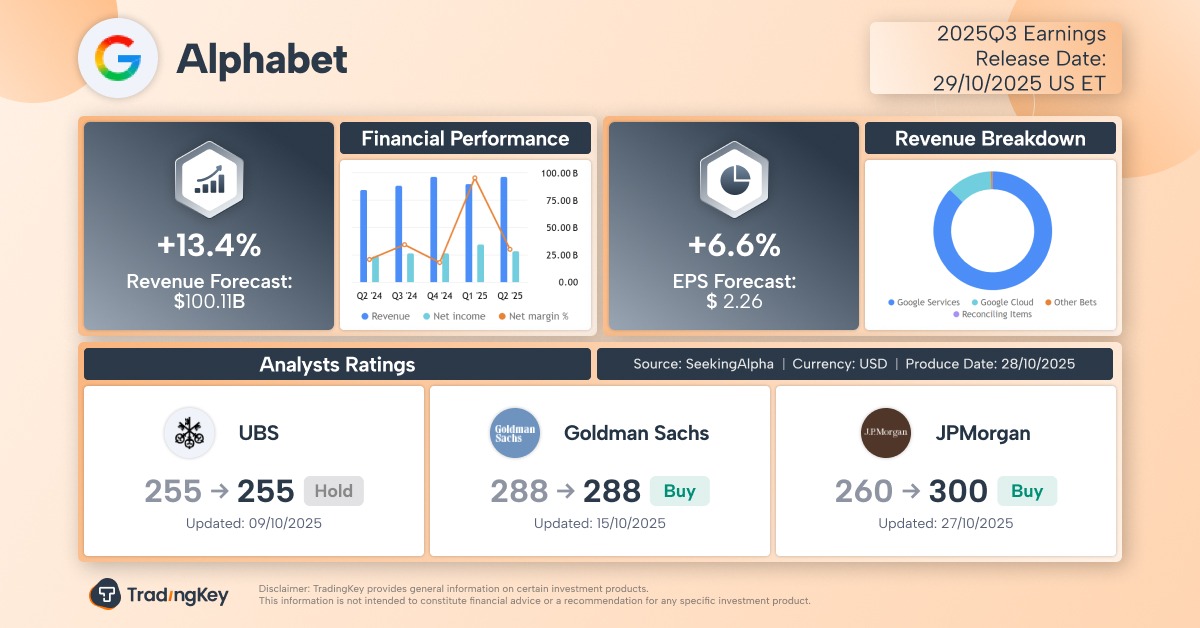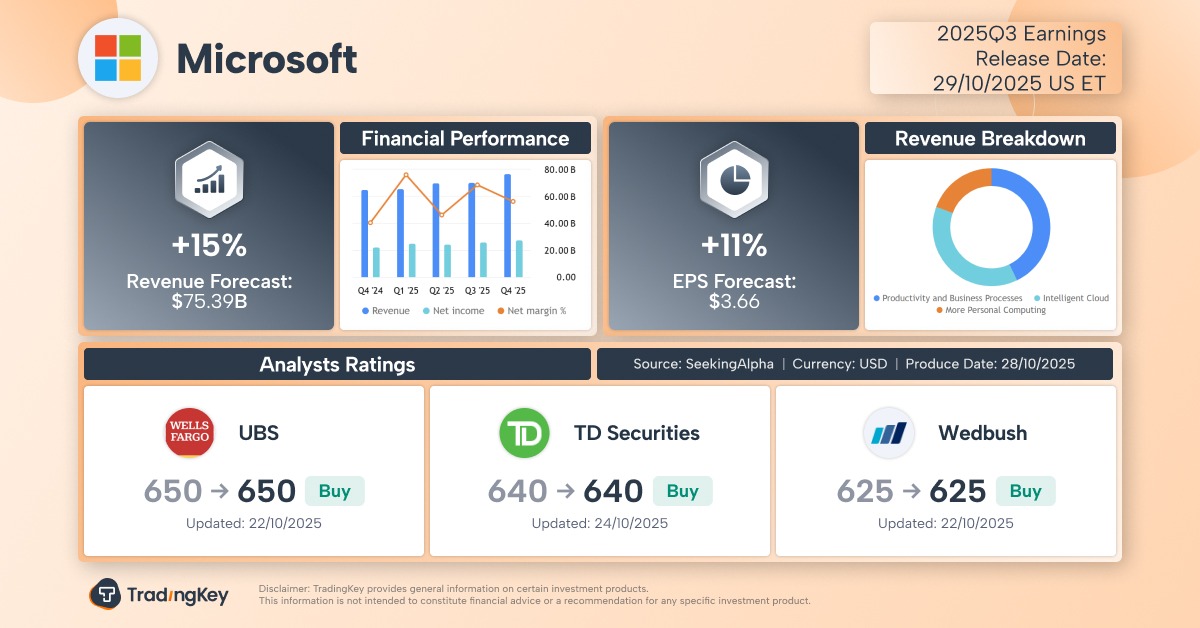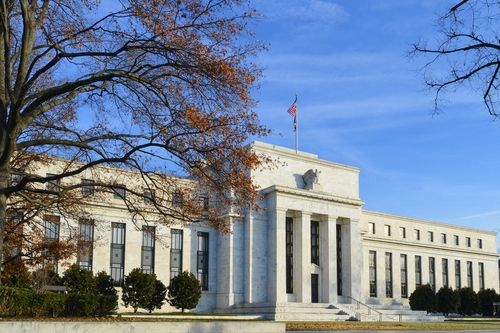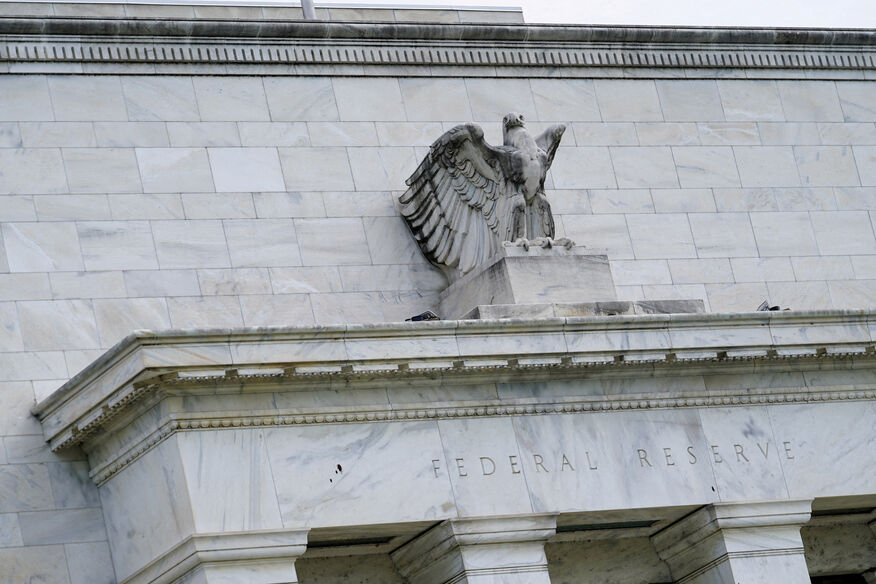- Gold retreats beneath $2,400 as US bond yields rise.
- Israel braces for potential Hamas retaliation, elevating regional tensions.
- Asian central banks, including the People's Bank of China, hold off on physical Gold purchases.
Gold price retreats below $2,400 and erases previous gains on Wednesday late in the North American session, despite rising geopolitical tensions in the Middle East and expectations for a looser monetary policy by the Federal Reserve (Fed). The XAU/USD trades at $2,385, down 0.06%.
Geopolitical tensions remain elevated as Israel awaits Hamas retaliation due to the assassination of its leader, Ismail Haniyeh. US intelligence suggests the response could be delayed until late Thursday or Friday. Meanwhile, Egypt instructed all its airlines to avoid Iranian air space for a three-hour period on Thursday due to tension between Israel and Iran.
Given the backdrop, Gold’s losses were tempered by mood. Nevertheless, the rise in US Treasury bond yields weighed on the non-yielding metal and boosted the Greenback.
The US 10-year Treasury note is up seven basis points (bps) and yields 3.968%. The US Dollar Index (DXY), which tracks the performance of the American currency against the other six, aims up 0.27% at 103.20.
A scarce economic docket in the US keeps investors focused on Initial Jobless Claims data, revealed on Thursday. TD Securities analysts commented, “Jobless claims on Thursday is something markets will be looking for confirmation of slowing economic numbers, particularly employment.”
Meanwhile, major Asian central banks refrained from buying physical Gold. Reports from the World Gold Council hint that China didn’t buy the yellow metal for the third straight month.
Daily digest market movers: Gold price on the defensive amid risk-on mood
- Worries of a US recession had faded, shown by market mood. Despite this, traders expect the Federal Reserve (Fed) will cut interest rates by 50 basis points at the September meeting.
- Market players found some relief following the ISM Services PMI release, which revealed the economy continues to expand at a healthier pace. However, all eyes are at Initial Jobless Claims for the week ending August 3.
- Initial Jobless Claims are expected to dip from 249K to 240K, according to estimates.
- Richmond Fed President Thomas Barkin will hit the wires on Thursday.
- The Fed decided to hold rates unchanged last week but indicated that favorable data on inflation and further weakening in the labor market could prompt action.
- The CME FedWatch Tool shows the odds of a 50-basis-point interest rate cut by the Fed at the September meeting at 63.5%, down from 68% a day ago.
Technical analysis: Gold price looms around $2,390
Gold prices remain consolidated shy of $2,400, which could pave the way for testing the $2,300 mark in the near term. Momentum is flat, an indication that neither buyers nor sellers are in charge, based on the Relative Strength Index (RSI) that is meandering around the neutral level.
If XAU/USD continues to weaken, the next support would be the 50-day Simple Moving Average (SMA) at $2,367, ahead of the 100-day SMA at $2,344. This would be followed by a support trendline around $2,316. Once cleared, the next support would be $2,277, the May 3 low.
Conversely, if buyers reclaim $2,400, the next resistance would be the psychological $2,450 mark. A breach of the latter will expose the August 2 peak at $2,477. Followed by the all-time high at $2,483 ahead of $2,500.
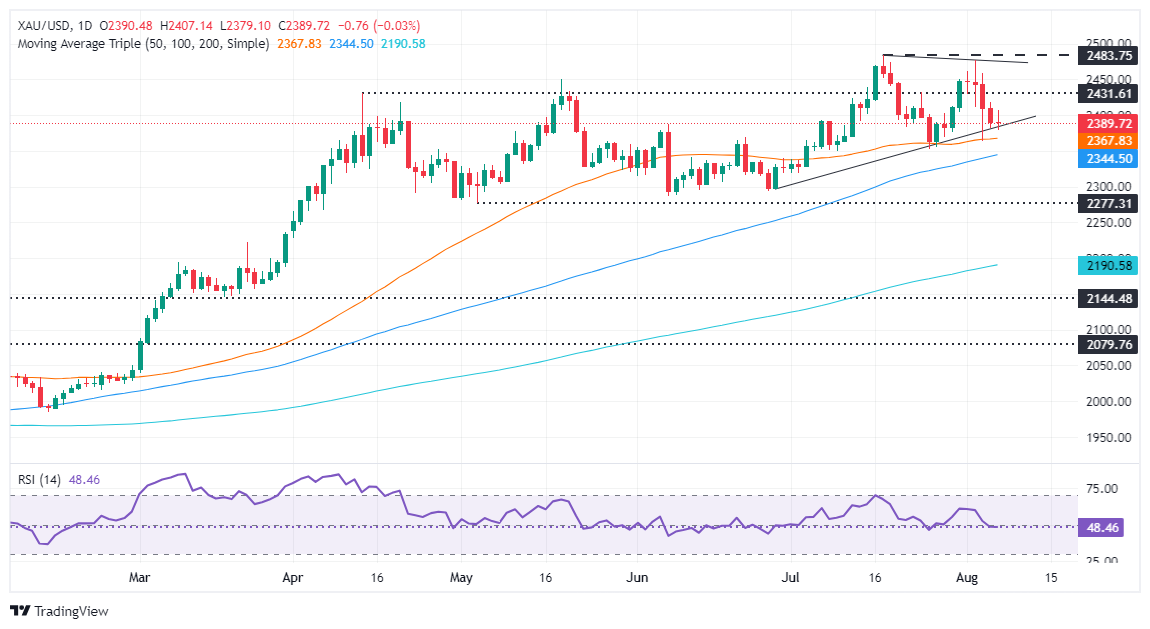
Fed FAQs
Monetary policy in the US is shaped by the Federal Reserve (Fed). The Fed has two mandates: to achieve price stability and foster full employment. Its primary tool to achieve these goals is by adjusting interest rates. When prices are rising too quickly and inflation is above the Fed’s 2% target, it raises interest rates, increasing borrowing costs throughout the economy. This results in a stronger US Dollar (USD) as it makes the US a more attractive place for international investors to park their money. When inflation falls below 2% or the Unemployment Rate is too high, the Fed may lower interest rates to encourage borrowing, which weighs on the Greenback.
The Federal Reserve (Fed) holds eight policy meetings a year, where the Federal Open Market Committee (FOMC) assesses economic conditions and makes monetary policy decisions. The FOMC is attended by twelve Fed officials – the seven members of the Board of Governors, the president of the Federal Reserve Bank of New York, and four of the remaining eleven regional Reserve Bank presidents, who serve one-year terms on a rotating basis.
In extreme situations, the Federal Reserve may resort to a policy named Quantitative Easing (QE). QE is the process by which the Fed substantially increases the flow of credit in a stuck financial system. It is a non-standard policy measure used during crises or when inflation is extremely low. It was the Fed’s weapon of choice during the Great Financial Crisis in 2008. It involves the Fed printing more Dollars and using them to buy high grade bonds from financial institutions. QE usually weakens the US Dollar.
Quantitative tightening (QT) is the reverse process of QE, whereby the Federal Reserve stops buying bonds from financial institutions and does not reinvest the principal from the bonds it holds maturing, to purchase new bonds. It is usually positive for the value of the US Dollar.




